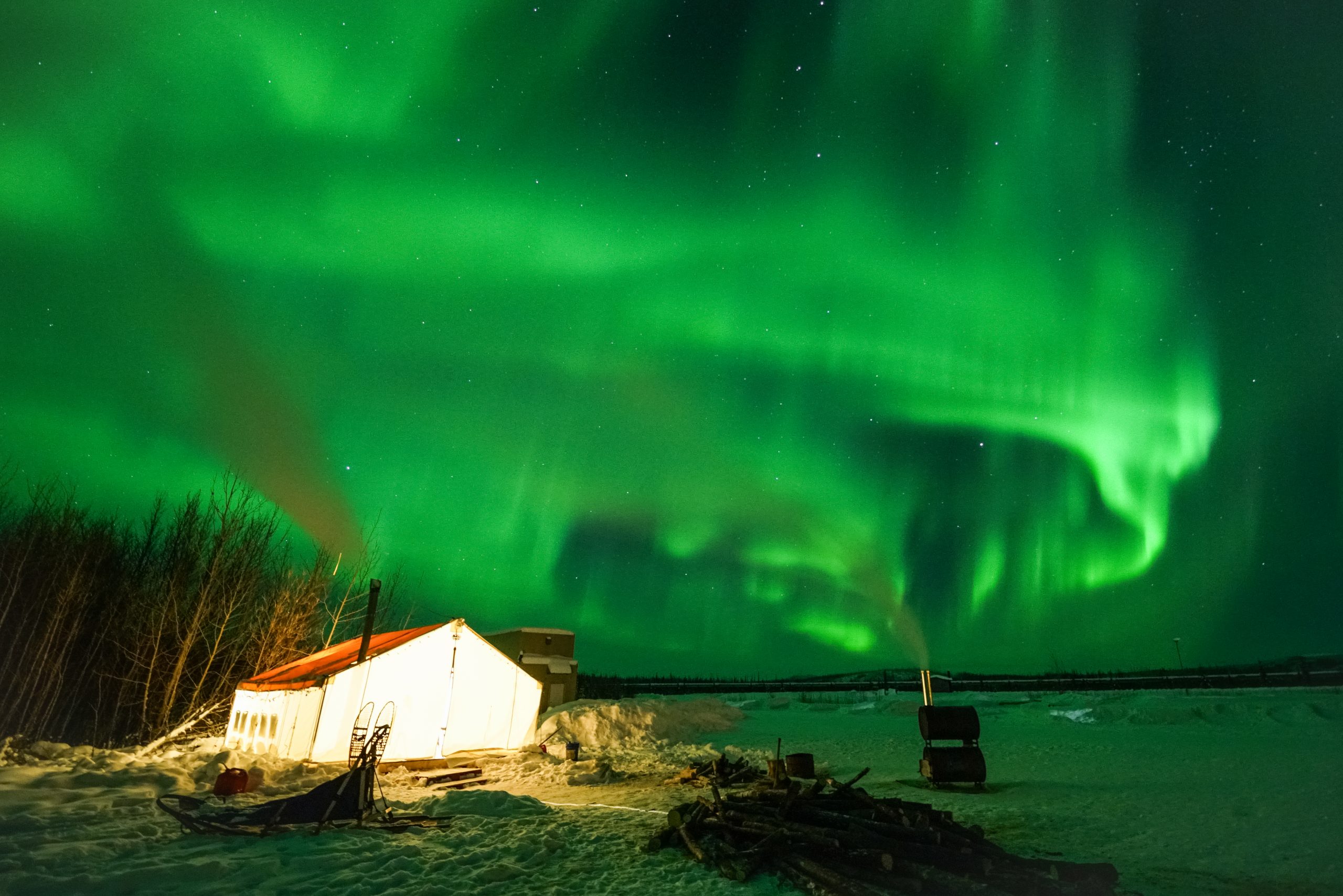Northern Lights or Aurora Borealis is a natural phenomenon that exists on most travellers’ bucket lists. The Northern Lights are the result of supercharged solar particles that collide with the atmosphere above Earth to create beautiful hues of green, purple, and blue in the sky. Alaska is one of the best places to view the Northern Lights because of its proximity to the Arctic Circle. It is believed that Alaska comes under the Aurora Oval, so the lights are seen more frequently here. The most essential elements for spotting the Northern Lights are cold temperatures and clear skies. Winter temperatures can drop to -35 degrees Celsius (-30 Fahrenheit) making Northern Lights in Alaska frequent and bright.
Also read: What’s The Best Time To See The Northern Lights In Norway?
Best Time To View The Northern Lights In Alaska

The best time to see the Northern Lights is when there is Solar Maximum, high solar activity. The Solar Maximum cycle continues for 11 years and the last one ended in 2019. But this does not mean there will be no Northern Lights sightings. Clear skies, cold temperatures, and locations like Alaska are ideal to watch the lights dance.
The best time to visit to view Northern Lights in Alaska is from mid-September to April. March is said to have the best sightings of the Northern Lights of Alaska because of its dark nights. The best views of the Northern Lights in Alaska are at 65° north and 70° north latitude. Fairbanks is at 65° north, making it one of the best places to view Alaska’s Northern Lights. Around September and March’s equinox months, there are high and bright occurrences of the Northern Lights. March in Alaska makes for clear skies and frequent glimpses. Other things to keep in mind for viewing Alaska’s Northern Lights are avoiding full moon nights so that the sky is not flooded with moonlight. To be safe you can avoid a week before and after a full moon. The ideal time to sight the Northern Lights of Alaska is approximately midnight.
Jackpot For Northern Lights In Alaska: Fairbanks

One of the best places to view the Northern Lights in Alaska, Fairbanks, is located inside the Aurora Oval. There are different places to see the Northern lights in Fairbanks like the Borealis Basecamp which is situated 25 miles from the city, and the Dalton Highway. Fairbanks has less precipitation and is further away from the coastal regions making for clear skies. The best time to see Alaska’s Northern Lights in Fairbanks is from August 21 to April 21. There are many Northern Lights tours that provide igloos, cabins, or dog sleds for special viewing experiences. You can also indulge in flying over the Arctic Circle or go ice fishing while watching the Northern Lights. The best places to see the display of the Northern Lights in Fairbanks are Cleary Summit, Ester, Haystack Mountain, and more.
Against The Setting Of Majestic Mountains: Coldfoot
Situated at 65° north, Coldfoot is also one of the best locations to view Alaska’s Northern Lights. Coldfoot’s location in the far north and the Brooks Mountain Range makes for more sightings of the Northern Lights. Many tours also offer a mountain Safari at the Brooks Mountain Range, renting a cabin at Wiseman, and dog sled adventures under the Northern Lights in Alaska.
One Of The Coldest Places On Earth: Barrow

Also called Utqiagvik, the town is 71° north. The town is 330 miles north of the Arctic Circle making it a great place to view the Northern Lights of Alaska. One of the coldest places on Earth, the town is also known for its authentic Alaskan culture with the Inupiat tribe. The Inupiat Heritage Centre helps you learn more about this tribe that used to hunt whales back in the day. You can also take part in the Inupiat Arctic Games here.
Wavering Lights
Other places that are near Wrangell—St. Elias National Park, a 13.2 million-acre protected reserve, Denali National Park, low light pollution and a huge expanse of more than six million acres, and Nome. You have to keep in mind that since the Northern Lights depend on solar activity and the weather, it is difficult to guarantee their sightings.


